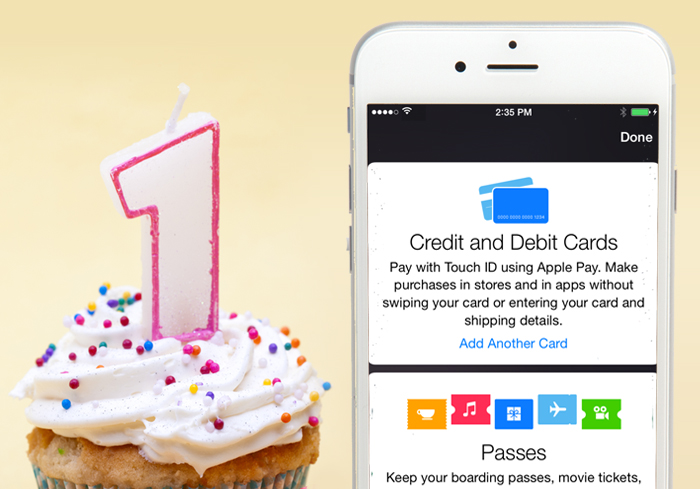
So what should they wish for when they close their eyes and blow out the candles? We decided to ask the experts. Check out what 13 of the best and brightest in payments and commerce had to say on the subject. The mood is mostly celebratory, but with just a hint of concern in the corners.
Did Apple live up to the expectations that come along with being the firstborn?
The answer is mostly “yes.” The mood on Apple Pay was pretty cheery – with wide applause for Apple and its ability to really (and finally) move the mobile payments game forward out of neutral. There was also wide praise for the natural (and strategically wise) interdependency that Apple’s NFC-based system has with EMV. And, Apple’s clever tokenization scheme – and focus – has also drawn applause.
Which is not to say there’s nothing for the team behind Apple Pay to wish for as they blow out those candles, since it seems likely that getting more consumers and merchants would be at the top of Apple’s wish list. Apple has very successfully drawn banking partners, but the latest research indicates that consumer adoption has been lagging thus far.
That said, many of the executives we spoke with remain confident that Apple can and will overcome this slow start – but more than one observed that if Apple is really looking to see a payoff from payments, they will need much stronger consumer demand to get merchants to pay attention. We agree.
So why not invite yourself to the party and read what they had to say? Happy Birthday, Apple Pay! Here’s to many more!
MARK RANTA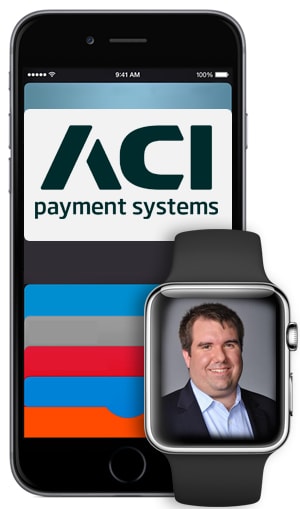
ACI WORLDWIDE’S GLOBAL HEAD OF DIGITAL BANKING SOLUTIONS
Apple Pay changed the payments script with its introduction, the same way the company rewrote the script on MP3 players (iPod), music (iTunes), cellular devices (iPhone), and tablets (iPads). It didn’t invent anything new — NFC payments have been around for more than a decade (MasterCard’s PayPass, Exxon/Mobil Speedpass, and more); mobile payments rolled out in the U.S. with Google Wallet more than four years ago, and tokenization of payment credentials, while not widely known, has been around for more than a decade.
What Apple brought to the party was a clean, easy-to-use, widely available version that combined all three, with the pomp and circumstance that only Apple can muster. Apple Pay did what Google, SoftCard (formerly ISIS) and others failed to do up to that point: get the public interested in mobile payments. And their timing could not have been any better, with massive data breaches at merchants running in the headlines leading into its launch. One year later, with the EMV liability shift putting even more focus on security of payments, Apple Pay (and the other Pays that have followed) are well-positioned to continue to grow in adoption and acceptance.
JEREMY GUMBLEY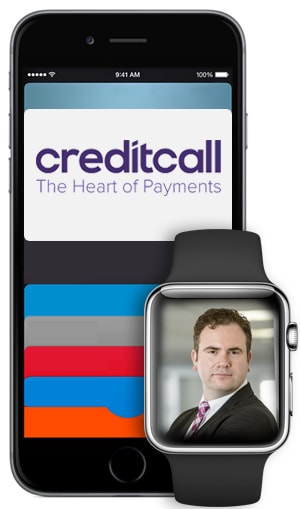
CREDITCALL’S CHIEF TECHNOLOGY OFFICER
Apple, with its huge ecosystem of partners, has done a great job to establish the mobile payments marketplace with Apple Pay. More impressively, Apple has been very clever with the timing of Apple Pay, as this is riding the coattails of another technology movement, EMV. The fact that Apple Pay and EMV are converging at roughly the same time is no coincidence. The timing aligns with when merchants are in the midst of re-terminalization. So while merchants are in the process of evaluating and implementing EMV and P2PE solutions that will make their payment transactions more secure, they can simultaneously evaluate and embrace mobile payment innovations like Apple Pay – or Android Pay or Samsung Pay.
In the lead-up to Apple Pay’s first birthday, there’s been an arms race in the mobile payments industry to build awareness around alternative options by Google and Samsung. As Apple Pay turns 2, we can expect the battle among the mobile payments brigade to heat up, especially in their marketing. It will be interesting to see how this space evolves. While it’s unlikely that Apple Pay will ever replace credit cards and cash, it is without a doubt fueling a wave of mobile payments innovation that is ultimately benefiting the consumer.
ANKUR KARER 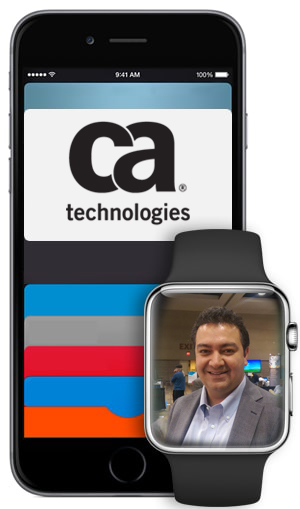
CA TECHNOLOGIES’ DIRECTOR, GLOBAL PRESALES, PAYMENT SECURITY
Thanks to Apple Pay, the past year has been a very exciting time for mobile payments. Not only did it act as a catalyst for other mobile operating systems to launch their own wallets, thus lifting the overall pool of mobile wallet users, but it has cemented NFC as the de-facto standard for the communication between mobile devices and points of interaction (people may not remember now, but one year back there was a lot of uncertainty around NFC!)
That said, challenges still abound for Apple Pay. A big issue Apple Pay faces in the U.S. is that despite significant participation by the banks, the adoption by the merchants is low and the overall percentage of transactions using Apple Pay remains minuscule. In the U.K., however, the challenge is completely the opposite, where there has been significant pushback from the banks in adopting Apply Pay due to the prohibitive interchange fees. In fact, the issue of interchange fees is the primary hurdle in Apple Pay’s expansion internationally.
Key conversations that CA’s payment security division has with banks revolve around “Digital Personalization” — the process of securely provisioning card details in the Apple Pay (and similar) environments. This is critical and has to be taken seriously to avoid fraud (such as Account Takeover) because the iPhone IS the trusted identity when communicating with NFC PoS terminals. CA also has had the opportunity to monitor growth and volumes of Apple Pay adoption from our own clients and analyze what spurs growth and drives adoption. For example, spikes in Apple Pay onboarding were observed with certain events, such as shipping of iPhone 6S or rollout of IOS 9.0.2. Outside of these events, however, the adoption is fairly moderate.
Once Apple sorts the issue of interchange and launches in more global markets, the mobile wallet industry can look onwards to exponential growth.
RAY WIZBOWSKI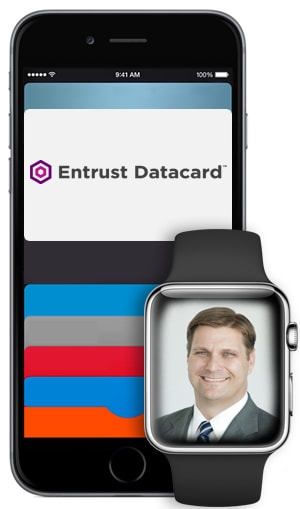
ENTRUST DATACARD’S VICE PRESIDENT, FINANCIAL VERTICAL
Since its introduction a year ago, Apple Pay has set into motion a series of industry moves which have pushed the conversation of mobile payments to the consumer level. In general, this conversation is good and most smartphone users would agree that going mobile is a logical direction for certain types of payments. In response, we also have seen other large tech companies jump in with their own version of mobile payment technology, specifically Google and Samsung.
Regardless of the solution, the challenge for mobile payment remains the ability to have a consistent payment experience, which is not currently the case with NFC-based technology. And while there are variations in how the transaction is communicated to the POS terminal, the biggest issue remains general ongoing use of mobile payments. I have seen several studies that show an initial spike as consumers try the novelty of using their phone to pay for the first time, but they quickly revert to a payment card because of habit, ease of use or acceptance issues.
One of the more powerful trends in mobile payments today is in-app purchase, not POS payments. In-app purchase is an area where Apple Pay and other mobile payment platforms have a real opportunity to add speed and convenience to the payment experience.
One critical lesson learned from Apple Pay, and mobile payments in general, is the necessity of a secure payment card loading process. Much of the fraud realized during the first months of Apple Pay was due to the lack of security controls and validation requirements for loading credit card information into the device. While tokenization is secure and both Visa and MasterCard have spent significant resources in support of token service providers, it is the initial payment card onboarding which needs to be refined to ensure the right (authorized) payment cards are appropriately provisioned to the right mobile device.
CHRIS CRAVER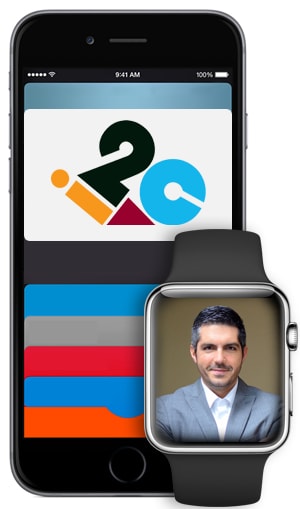
I2C’S VICE PRESIDENT, WORLDWIDE PRODUCT MARKETING
Just as Apple did with the music industry, the introduction of Apple Pay has aligned the payments industry ecosystem — issuers, processors, networks and merchants.
After many years of others trying, Apple is succeeding by focusing on the user experience, not the economics, and in doing so moved us all forward.
The conversation is appropriately centered on ways to enhance the consumer experience and reduce the friction in mobile commerce, rather than about the payment itself.
With new solutions from Samsung Pay, Android Pay, and others, the industry will continue to innovate new use cases and new ways improve the customer experience in commerce that take advantage of cardholder authentication and transaction tokenization.
AMIT JHAS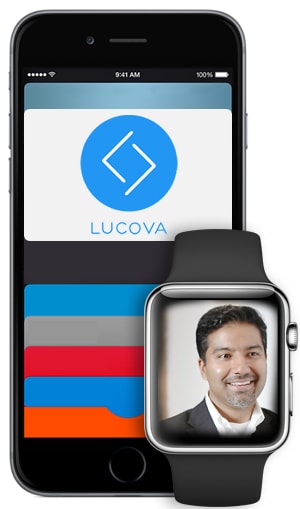
LUCOVA’S CHIEF EXECUTIVE OFFICER
Apple Pay, through NFC, has made great strides in moving the conversation of mobile payments to the general audience. Even our parents know about it!
But Apple Pay is just one element of an overall mobile experience. The problem with NFC was highlighted in a recent article. It places the identity of the customer at the end of the transaction.
This is the exact opposite of where the true mobile experience can begin: at the introduction of a customer entering your store. Bluetooth appears to be ubiquitous and flexible enough to potentially compliment Apple Pay and provide a truly hands-free transaction, with a focus on the human experience.
Apple Pay is just the beginning of a revolutionary change in commerce.
SRINIVAS NIDUGONDI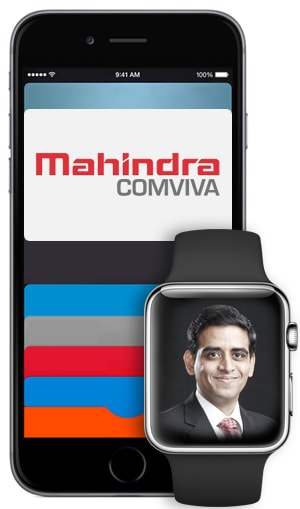
MAHINDRA COMVIVA’S SENIOR VP AND HEAD OF MOBILE FINANCIAL SOLUTIONS
Going by sheer numbers, Apple Pay has made a decent start. Adoption will grow as awareness grows, however, I am more excited about the role Apple Pay is playing in bringing mobile contactless payments to the forefront, making it easier for others, like Samsung, Google and banks to launch their own services.
For its first year, Apple has been directing its energies in the right direction, expanding its mobile payments ecosystem by entering into agreements with financial institutions, credit unions and retail chains such as KFC, Starbucks, Best Buy, and Chili’s. More than 100 banks and credit unions support Apple Pay, and this number is only going to grow. Apple has also partnered with Square on a new reader that will help small businesses accept mobile payments. A wider acceptance network will boost transactions.
A good thing about Apple Pay is that it is a comprehensive solution, supporting both proximity and in-app purchases, making it the preferred option for all transactions. The latest software upgrade, iOS 9, allows addition of store credit card and reward cards to Apple Pay, taking it beyond payment and making it a more lucrative solution. Also, with time, expect new use cases to emerge, increasing the breadth and scope of its service and reach even further. For example, given the speed and convenience of NFC payments, transportation provides a logical extension for Apple Pay services. The proof of the pudding lies in the numbers: Apple Pay seems to have reversed a descending trend at New Jersey Transit, which experienced a 30 to 40 percent decline in contactless transactions in mid-2013. But since Apple Pay’s introduction, volumes have increased by single digits.
The EMV shift and Apple Watch will also help in accelerating Apple Pay adoption. However, Apple has to work on educating consumers why it is better than the existing card-based payment. Overall, the uptake pattern Apple Pay is likely to follow will be the same as that of any adoption curve. Nonetheless, the overall uptake cycle, in all likelihood, will be faster.
JORN LAMBERT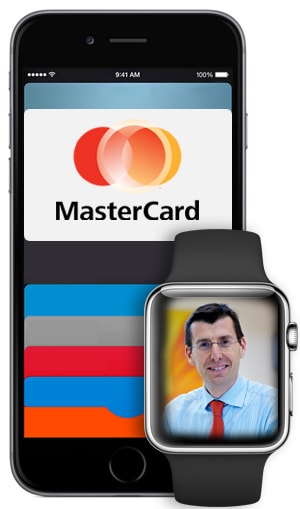
MASTERCARD’S GROUP EXECUTIVE, CHANNELS
The first year of Apple Pay has been a groundbreaking and exciting time for MasterCard and our customers around the world.
Through the MasterCard Digital Enablement Service (MDES), we are proud to have delivered millions of MasterCard credentials into Apple devices on two continents, enabling MasterCard cardholders to make secure in-app and contactless transactions.
We are also thrilled about the continued rapid adoption of contactless payments – in both the U.S. and U.K. – which will provide MasterCard cardholders with more secure, convenient checkout experiences.
We look forward to the year ahead, bringing to life more markets, new devices and continuing to drive secure contactless and in-app payments globally.
MARC GARDNER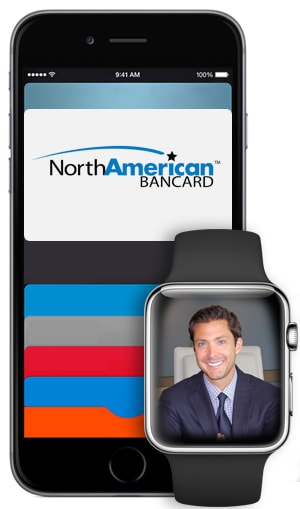
NORTH AMERICAN BANCARD’S CHIEF EXECUTIVE OFFICER
As Apple Pay hits its 1-year anniversary, there’s a lot to look back on and look forward to in terms of how the payments experience has shifted for both merchants and consumers. Apple has done a great job in collaborating with big retailers to get Apple Pay into stores and getting consumers more comfortable with the technology. But their efforts haven’t stopped with the retailers – the introduction of the new PayAnywhere reader to Apple Stores is proof of that. The new PayAnywhere reader offers the ability for SMBs to accept not just Apple Pay, but other contactless payments like Android Pay and Samsung Pay.
As the conversation around Apple Pay continues to grow, so will the conversation around the payments industry as a whole; e.g., the announcement of Android Pay and Samsung Pay, as well as the EMV liability shift. Looking forward, the payments industry needs to stay on top of the ever-growing acceptance of Apple Pay and contactless payments, and continue to focus on innovation and security in order to provide merchants and consumers with the best payments technology and services possible.
TOBIAS SCHREYER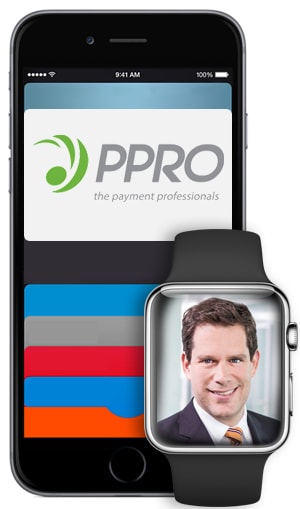
PPRO GROUP’S CO-FOUNDER AND CCO
Since the announcement of Apple Pay in the U.S. last October, it seems the new innovative payment method hasn’t succeeded as well as predicted by Apple’s Chief Executive Tim Cook, who in January stated that 2015 would be “the year of Apple Pay.”
According to a survey by InfoScout, the number of eligible Apple Pay users who tried the service dropped from 15.1 percent in March to 13.1 percent in June. Despite the accelerating growth in the number of iPhone 6s being sold, it seems a lower percentage of the users are not adopting or even trying Apple Pay — this is largely due to concerns around the lack of security. As a result, customers declining to use Apple Pay went from 15 percent to 19 percent.
In contrast, a recent survey conducted by Wristly found that 80 percent of Apple Watch owners in the U.S. and U.K. have already used Apple Pay, and suggests that this number could eventually hit 95 percent. Research also found that owning an Apple Watch dramatically increased the chances of using Apple Pay. Despite this, many retailers are still not accepting Apple Pay due to insufficient customer demand. Not only this, but also the cost of terminals and computer upgrades required to accept these types of payments appears to be deterring retailer uptake. The U.S. market is a demographic much more familiar with credit card swiping as opposed to contactless payments, and this lack of suitable technology is another reason why the U.S. is largely delayed on embracing Apple Pay.
Another reason for the U.S.’s slower adoption than expected of Apple Pay is due to Walmart and 18 other top retailers challenging Apple Pay with a mobile wallet called CurrentC, which is scheduled to launch later this year. Any retailers participating in CurrentC will not be allowed to accept any other mobile wallet, for example Apple Pay, until 2016. Nineteen of the NRF’s Top 100 retailers will therefore not be able to accept Apple Pay by the end of the year, thus affecting the growth in consumers using Apple Pay.
The U.K., however, is much more familiar with these payment methods and already has support for contactless payments through debit and credit cards, so much so that 10 contactless payments are made every second. In total, contactless payments were up 255 percent in 2014, while 58 million contactless cards were in circulation. On Transport for London alone, commuters tap to pay over 1 million times a day. As Apple kickstarted the mobile payments process in the U.S. market last year, the U.K. was given the chance to prepare, and was therefore ready to adopt Apple Pay before its arrival to the U.K. was even announced.
LISA SHIPLEY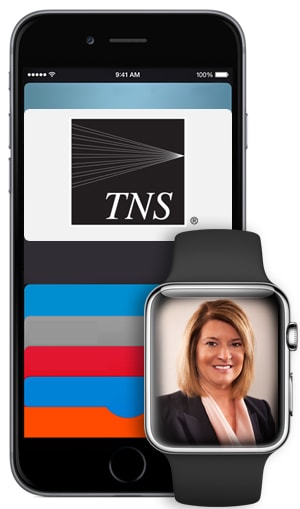
TNS PAYMENT NETWORK SOLUTIONS’ EXECUTIVE VP AND MANAGING DIRECTOR
Apple Pay has been a major driving force since its launch last year, moving the mobile payments space forward with a solid foundation from which to grow. Previous early market shapers, such as Google, had promising wallet concepts, but it was Apple’s impressive consumer following combined with its ownership of the iOS operating system which has helped to catapult Apple Pay into the mainstream.
Apple still has a lot of work to do, primarily with mass merchant adoption, but many consumers still need convincing, too.
I feel the mobile payments space is heading in a very positive direction and Apple Pay is certainly leading this at the moment, but this is by no means a done deal. We are at an exciting junction and there is still a lot to play for. I believe we’ll continue to see new innovations emerge as well as market challengers, such as Samsung Pay, improve their adoption rates, so Apple needs to remain focused if it is to secure its place at the top.
KIM OHLROGGE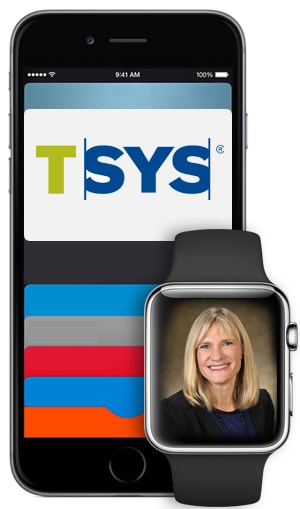
TSYS’ GROUP EXECUTIVE OF GLOBAL PRODUCT
For years, Apple has been an innovation leader in the technology market and developed strong customer loyalty with users as a result.
In the past year, Apple has leveraged both to launch Apple Pay and catalyzed the payments space to bring new energy and action to mobile payments.
This, combined with the growth of capable terminals, and an ongoing interest among cardholders in digital engagement to manage and protect their own finances using their smartphones, sets the stage for Apple Pay and other digital payment technologies to gain even wider acceptance and drive legitimate mobile payment adoption.
We remain excited about the unprecedented collaboration between players within the payments ecosystem which is leading the way for creating a frictionless purchase experience for consumers.
STEVE HERBERT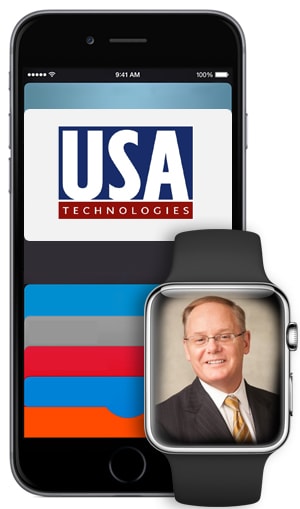
USA TECHNOLOGIES’ CHAIRMAN AND CEO
It’s hard to believe it’s been a year since Apple Pay first launched! We believe that Apple Pay has the clear advantage with iPhone users due to the iPhone’s ubiquity, as well as the ease of use created with the association of the wallet and the operating system on the phone.
That said, the market has become more interesting and nuanced as Google and Samsung gear up to compete in the market. Overall, adoption is still in the early stages, but the trend for cashless payments will continue to grow steadily as convenience trumps tradition.
If you think of the transition from in-store banking to ATMs and online banking, it wasn’t overnight, and people of a certain mindset still prefer the one-on-one service of a teller. Conversely, Gen X, Y, and Z, particularly the latter, are all about convenience and ease of use. We believe Apple Pay will continue to be a pioneer in mobile payments and we should see a trend of growing adoption over the next couple of years.
MAX ELISCU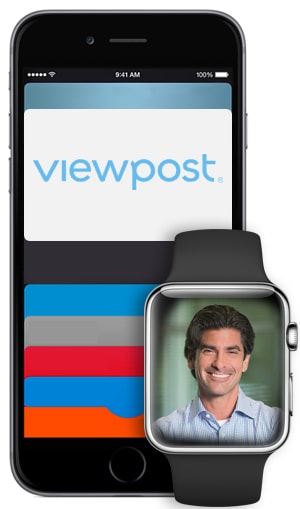
VIEWPOST’S FOUNDER & CEO
The concept of storing card data in a digital wallet and allowing NFC checkout is over five years old. New this time around is the work related to tokenization and security, and more important, the influence of Apple’s brand to rally the interests of consumers, banks, processors and merchants. Apple’s brand power is immense, and it has impacted the payment ecosystem’s willingness to take action. That said, consumer adoption still remains lower than anticipated, which may be because consumers simply don’t see the need, or availability isn’t sufficient. It seems clear that it isn’t a user experience problem. Time will tell.
Looking ahead at mobile payments, I believe the push toward real-time payments, when integrated with Apple Pay, stands to shift the balance of power in the retail payment ecosystem away from the likes of Visa, MasterCard and American Express. The moment real-time payments are available to consumers on their phone, the very existence of the credit card industry will be threatened. Consider the numbers: Retailers paid more than $64 billion in interchange fees last year. If a retailer can reduce the cost of sales by 1.5 to 3 percent per transaction by giving customers an incentive to pay using a different method than credit card, they will invest heavily to do so. Real-time payments will finally give retailers a vehicle to disintermediate card. The underlying card-issuing banks will continue to do well, as credit will still flow to their customers. The source of consumption will simply shift from a card to a thumb swipe.
Apple Pay, in combination with real-time payments, is a nightmare come true for Visa, MasterCard and American Express. Ironically, they have been its biggest supporters. As to consumers, they continue to be the beneficiaries of this incredible payment renaissance. New reward systems, better user experiences — and ultimately, lower costs — are aligning to drive deeper engagement and adoption of the mobile payment experience.